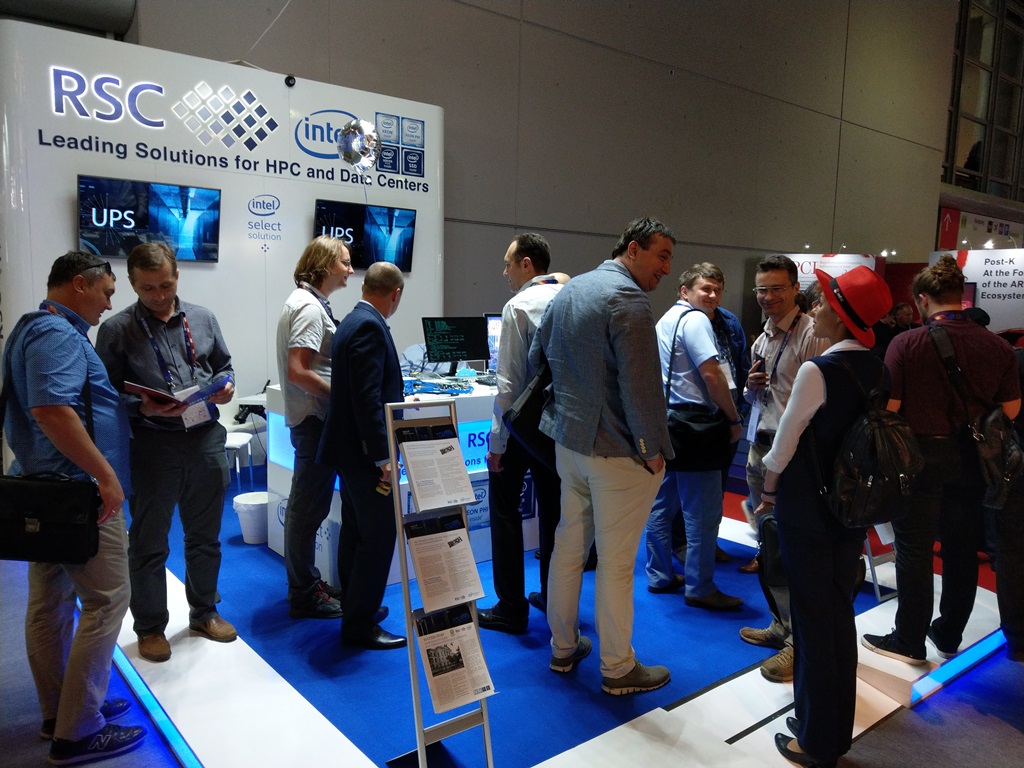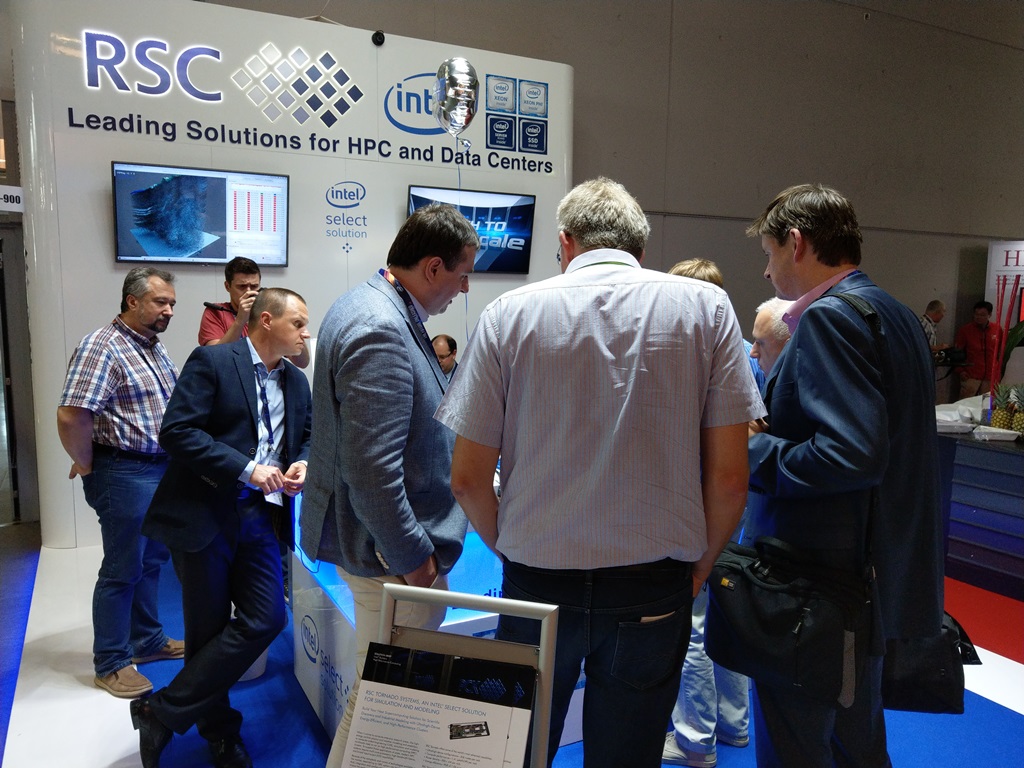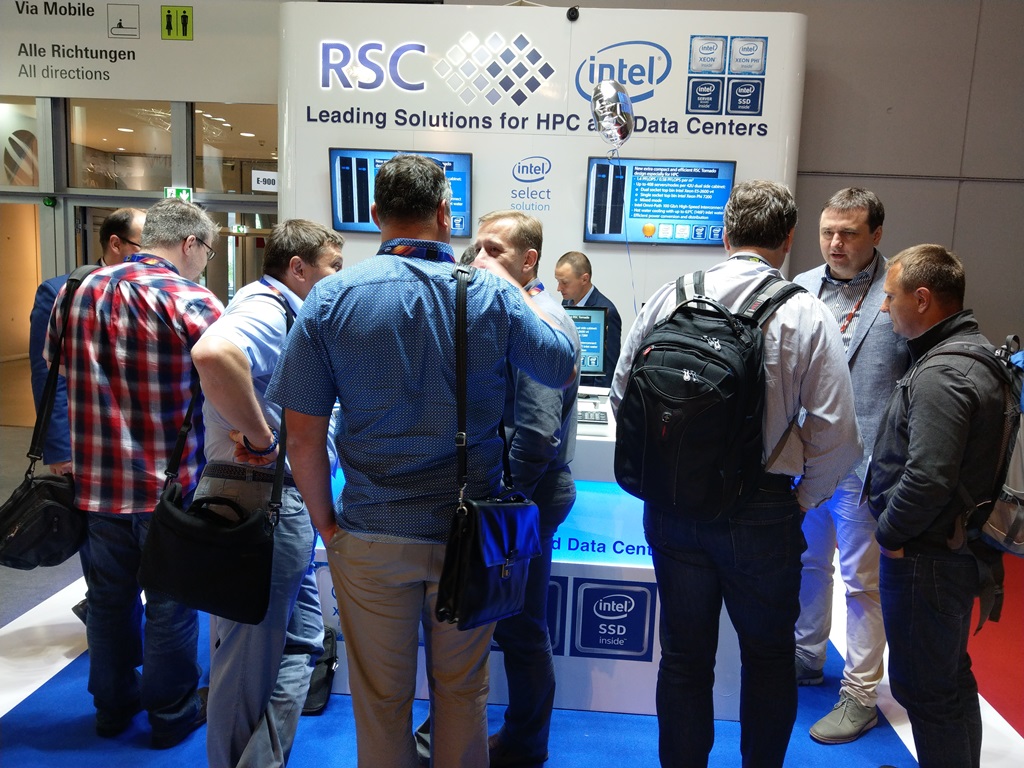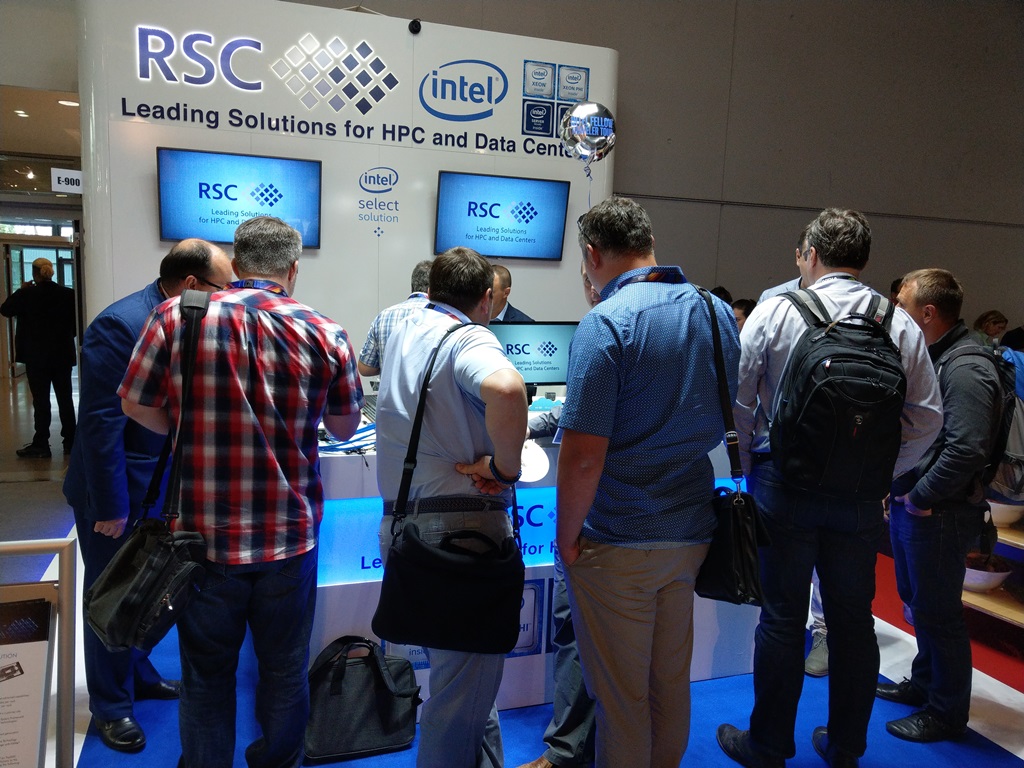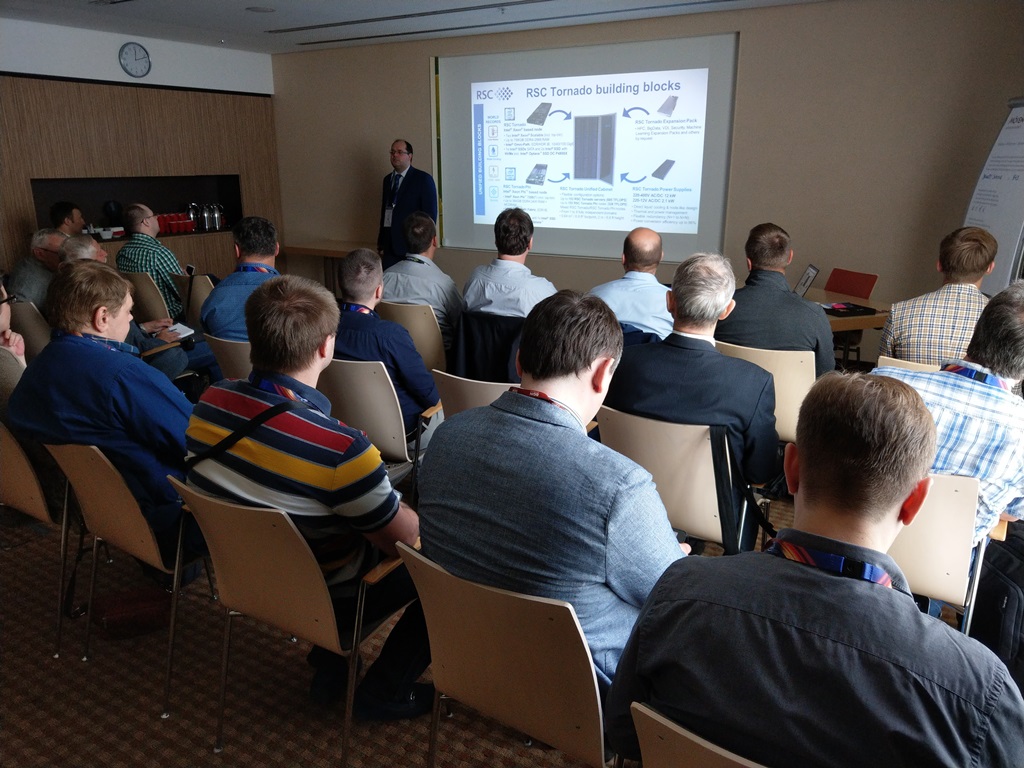RSC Group, the world’s leading developer and integrator of innovative ultra high-dense, scalable, and energy efficient solutions for high-performance computing (HPC) and data centers, will launch at ISC’18 a hyper-converged HPC solution based on proven RSC Tornado architecture. It will feature the newest Intel® SSD DC P4511 (NVMe, M.2) and Intel® Optane™ SSD P4800X M.2 Series with Intel® Memory Drive Technology (IMDT).
The transformational Intel® Optane™ SSD — combined with Intel® Memory Drive Technology — integrates the solid-state drive into the memory subsystem, transparently presenting a pool of memory [DRAM] to the operating system, enabling bigger and affordable memory. This means you can expand insights using massive data pools, or reduce high-capacity DRAM CAPEX expenditures. Architected with Intel® 3D NAND technology, the Intel® SSD DC P4511 Series delivers capacity, performance, and power efficiency improvements to help further optimize storage-enabling data centers to do more per server, minimize service disruptions, and efficiently manage at scale. By including these new technologies from Intel, the RSC Tornado hyper-converged solution offers increased flexibility for improved memory-and-storage density and efficiency to the HPC community.
“We are very happy to work with RSC on their innovative Tornado hyper-converged HPC platform. By taking advantage of the capabilities of Intel’s Optane™ technology and 3D NAND products, RSC is able to offer more flexibility in their platform solutions,” – said James Myers, Director, Storage Solutions Architecture, Intel Corporation. “Intel® Optane™ technology with IMDT, combined with Intel® 3D NAND, helps our customers offer products that meet a wide variety of workload requirements, improve density and power efficiency at the same time.”
RSC Tornado hyper-converged blade node design with direct liquid cooling is well balanced for different HPC workloads and could be part of on-demand storage solution based on different file systems, for example Lustre (Lustre-on-demand). RSC Tornado compute node had been expanded to include up to 12 Intel SSDs of one type as mentioned above, Intel® Xeon® Processor Scalable Family and Intel® Server Board S2600BP. It now contains up to 24TB of high bandwidth and low latency SSD storage, and the capacities are expected to grow as higher density SSDs are introduced to the market. RSC Tornado hyper-converged architecture supports different types of high-performance and on-demand SSD based data storages, including on-demand creation of parallel file system partitions such as Lustre, and allows the integration with various HPC schedulers.
RSC has a solid track record of developing and delivering HPC storage products based on Intel® SSDs. For example, RSC Tornado based supercomputer with Intel SSD storage system has been deployed recently at Joint Institute for Nuclear Research (JINR) and is highly ranked on 9th position in the latest edition of IO500 List, a new industry benchmark for HPC storage systems.
At ISC’18, RSC is demonstrating a full set of components for modern hyper-converged HPC systems of different scale with 100% direct liquid cooling in ‘hot water’ mode, including high-performance RSC Tornado computing nodes based on the top-bin Intel® Xeon® Platinum and Intel® Xeon® Gold processors (part of the Intel® Xeon® Scalable platform), Intel® Server Board S2600BP, high-speed NVMe solid state drives in high-dense М.2 format and the latest Intel® Optane™ SSD DC P4800X Series. The RSC Tornado solution is built using 100% direct liquid cooled Intel® Omni-Path Edge Switch 100 Series that ensures end-to-end efficiency of the cooling solution with ‘hot water’ and eventually the lowest possible total cost of ownership of the system.
Innovative management and monitoring system based on RSC BasIS integrated software stack also provides high availability, resistance to failures and ease of use of HPC systems based on RSC Tornado solution. This system is an open and easily expandable platform based on open source software and micro-agent architecture. It enables controlling entire data centers and their individual elements such as computing nodes, interconnects, infrastructure components (such as pumps, etc.), workloads and processes. Every system element (computing nodes, power supplies, hydraulic regulation modules, etc.) contains an integrated management module providing broad capabilities for detailed telemetry and flexible management. The RSC rack-level system design supports hot-swap replacement of computing nodes, power supplies and hydraulic regulation modules (with redundancy) without interruption of system operation. Most components of the system (such as computing and storage nodes, power supplies, network and infrastructure components, etc.) are software-controlled and provide flexible software-defined services that significantly simplifies and speeds up initial deployment, maintenance and future upgrades of the system. Liquid cooling of all components ensures reliability of operation and their longevity.
Phone
E-mail


